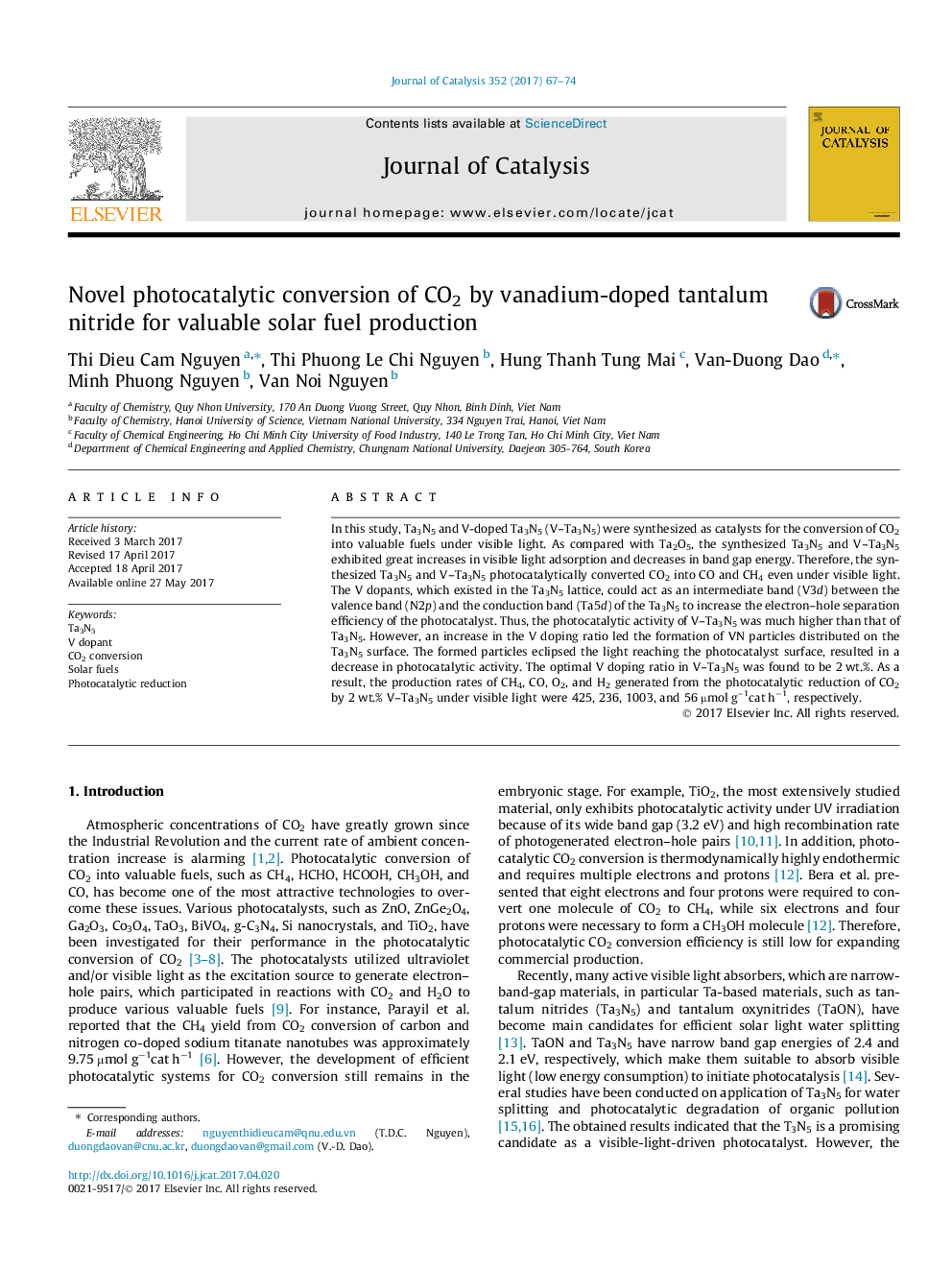| Article ID | Journal | Published Year | Pages | File Type |
|---|---|---|---|---|
| 6455337 | Journal of Catalysis | 2017 | 8 Pages |
â¢Synthesized Ta3N5 and V-Ta3N5 successfully converted CO2 to valuable fuels.â¢V dopant enhanced electron-hole separation and prolonged its lifetime.â¢V-Ta3N5 exhibited great increases in light adsorption and decreases in band gap energy.â¢V-Ta3N5 reduced CO2 and H2O vapor to CH4, CO, O2, and H2 even under visible light.â¢A V/Ta ratio of 2 wt.% was optimal for enhancing the photocatalytic activity of Ta3N5.
In this study, Ta3N5 and V-doped Ta3N5 (V-Ta3N5) were synthesized as catalysts for the conversion of CO2 into valuable fuels under visible light. As compared with Ta2O5, the synthesized Ta3N5 and V-Ta3N5 exhibited great increases in visible light adsorption and decreases in band gap energy. Therefore, the synthesized Ta3N5 and V-Ta3N5 photocatalytically converted CO2 into CO and CH4 even under visible light. The V dopants, which existed in the Ta3N5 lattice, could act as an intermediate band (V3d) between the valence band (N2p) and the conduction band (Ta5d) of the Ta3N5 to increase the electron-hole separation efficiency of the photocatalyst. Thus, the photocatalytic activity of V-Ta3N5 was much higher than that of Ta3N5. However, an increase in the V doping ratio led the formation of VN particles distributed on the Ta3N5 surface. The formed particles eclipsed the light reaching the photocatalyst surface, resulted in a decrease in photocatalytic activity. The optimal V doping ratio in V-Ta3N5 was found to be 2 wt.%. As a result, the production rates of CH4, CO, O2, and H2 generated from the photocatalytic reduction of CO2 by 2 wt.% V-Ta3N5 under visible light were 425, 236, 1003, and 56 µmol gâ1cat hâ1, respectively.
Graphical abstractDownload high-res image (67KB)Download full-size image
